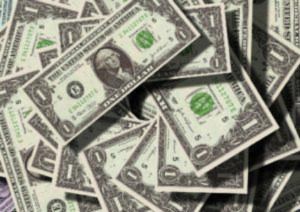How to Increase Mail Survey Response Rates
When you’re doing a Mail Survey Project, the last thing you want is to spend a lot of time and resources creating and sending a survey and get a low response rate. Without a sufficient response rate, results are questionable, and data quality is severely affected. To avoid this, we lined up some Best Practices in How to Increase Mail Survey Response Rate:
- A Compelling Cover Letter
- Reduce Length of Survey
- Use Reminder Postcards and Pre-Notification Letters
- Ensure Survey Return is Simple and Convenient
- Brand your Survey
- Use Incentives
1. A Compelling Cover Letter
The cover letter should not be overbearing but instead a request for help. Emphasize your genuine appreciation for the time and effort of your potential respondents. A study has found that including the phrase “it would really help us out” can increase the survey response rate by 18%. A strong cover letter should include:
- The purpose of the study
- The materials included for returning the survey (e.g. return stamp and envelope or business reply envelope)
- The confidentiality or anonymity of the survey
- The significance of a prompt response without being overbearing
- The benefits to the respondent
- The impact of the respondent’s feedback and how their opinion is valued
- Contact information in case respondents have inquiries about the survey
2. Reduce Length
A long survey is an instant rejection by most respondents. A study has found that data quality reduces by more than 10% when the survey takes more than 15-20 minutes to complete. For example, respondents only filling out a portion of the survey. Hence, it is best to keep the survey at or below 15 minutes.

3. Use Reminder Postcards and/or Pre-Notification Letters
Letting respondents know that you will be sending them a mail survey is an essential component in most survey projects. Notifications can include: sending an email, letter, or postcard in advance. The message should include the purpose of the survey, the survey process, and why the potential respondents’ participation is vital.
Don’t forget the reminder postcard or letter. According to Don Dillman (Dillman as cited in Fox, R.J., & Crask, M.R., & Kim, J. (1988). Mail Survey Response Rate. Public Opinion Quarterly, 52, 474) this approach allows you to express your sincere appreciation for the persons hopeful participation, but this also enables you to combat one of the most common reasons that people cite for not participating in a survey – they forgot! In fact, if your budget can absorb it, we have found that a common practice for survey research is to send a prenotification letter, followed by the survey packet, followed by a follow- up contact of some form which will give you 3 different occasions to interact with your hopeful participants. There are multiple studies that have shown a simple reminder can increase response rates by 10-30%.
4. Ensure Survey Return is Simple and Convenient
Survey return should be costless and hassle-free for respondents. Consider using prepaid return envelope for higher response rate and reduced follow up.

Use Return Postage. Enclose postage and an envelope in the survey material for the expected reply. The response rate increases significantly with the use of return postage. Moreover, using stamps on return envelopes has been shown to be better than business reply mail, however, the costs may outweigh the benefits.
Check out this link 3 Tips to Streamline Your Survey Return Schedule
5. Brand your Survey
Make sure respondents know who the survey is from. Include a return address and your logo to identify the sender. This will improve credibility and increase response rates.

6. Use Incentives
Answering a survey takes time away from the busy schedule of your respondents. Make it worthwhile by providing value. Money, promotional items, charitable donations, and raffles are the top incentives that are proven to work and reach target response rates of more than 40%.
- Money – This should come as little surprise. Monetary incentives include cash, checks, PayPal credits, money orders, gift cards, and coupons.
- Promotional Item- Product and service samples are also a big hit with respondents. In order for them to work, however, you must know your audience. Offer something that speaks to them that you know they will enjoy.
- Charitable Donations- Charitable donations appeal to social and environmental consciousness. The stronger the emotional connection to the cause, the better your response rate will be and the more likely respondents will see you in a favorable light.
- Raffle– A drawing incentive gives your respondents a random chance to win a valuable prize, as opposed to a contest based on merit. They simply complete the survey and return within a given timeframe and they are automatically entered to win.
If you want to learn more about the incentives, check out our post on 3 Survey Incentives to Explode your Response Rate
Bonus Tips:
1. Multi-modal or Mixed-mode Data Collection
To increase the response rate, consider using mail surveys with other channels, such as online. This is called a multi-modal survey. Basically, you use two or more modes to collect responses from potential respondents, giving them options to complete the survey with the mode that best suits them.
Check out our post If you want to learn When to do a Multimodal Survey
2. Express Mail
According to a study, express mail can increase the response rate, especially to executives and business respondents. Express mail is a good way to validate the importance of the survey response to potential respondents.
There you have it, the 6 best practice and 2 bonus tips that will greatly influence your response rate. To ensure success, be sure to take a look at these tips before you send out your mail survey.
Partner with Us
DataForce is a premier data collection company specializing in Mail and Multi-modal Survey Management. We are the only data collection company in the industry with large-scale, in-house capabilities for every stage of your survey or study. Rather than outsource your project to various partners, DataForce can streamline your entire research effort with end-to-end planning, printing, mailing, fulfillment, data collection, and analytics – all done in-house! Our one-source solution is uniquely designed to align with your organization’s mission at the strategic level while saving you time, risk and money! From simple, short-term surveys to complex, longitudinal studies, DataForce technology is built to scale. DataForce is also a certified Woman Owned Small Business (WOSB), helping you meet diversity requirements.
For more information on Survey Mailing services and Data Collection Services, survey fulfillment services Contact us Now!





